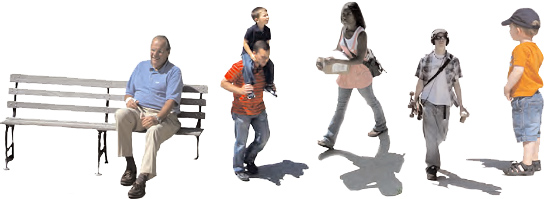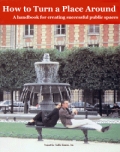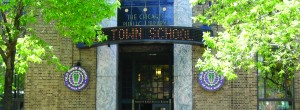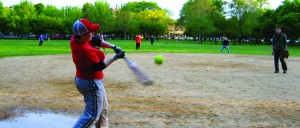 11 principles of placemaking
11 principles of placemaking
PPS has developed 11 principles that can be used to evolve public spaces into "community places." Although similar words, "spaces" and "places" have very different meanings. A space is a physical description of a piece of land, whereas a "place" connotes an emotional attachment to the piece of land.
1. The community is the expert.
People who use a public space regularly provide the most valuable perspective and insights into how the area functions. They also can help identify issues that are important to consider in improving the space. Uncovering and incorporating their ideas and talents is essential to creating a successful and vital community place.
2. You are creating a place, not a design.
Design is an important component of creating a place, but not the only factor. Providing access and creating active uses, economic opportunities, and programming are often more important than design.
3. You can't do it alone.
A good public space requires partners who contribute innovative ideas, financial or political support, and help plan activities. Partners also can also broaden the impact of a civic space by coordinating schedules for programming and improvement projects.
4. They'll always say, "It can't be done."
Every community has naysayers. When an idea stretches beyond the reach of an organization or its jurisdiction and an official says, "It can't be done," it usually means: "We've never done things that way before." Keep pushing. Identify leaders in the community who share your vision and build support. Talk to your alderman and get him or her engaged.
5. You can see a lot just by observing.
People will often go to extraordinary lengths to adapt a place to suit their needs. A raised curb can be used as a place to sit, sort mail, and even—believe it or not—cook clams. Observing a space allows you to learn how the space is used.

6. Develop a vision.
A vision for a public space addresses its character, activities, uses, and meaning in the community. This vision should be defined by the people who live or work in or near the space.
7. Form supports function.
Too often, people think about how they will use a space only after it is built. Keeping in mind active uses when designing or rehabilitating a space can lower costs by discouraging unnecessary and expensive landscaping and monuments, as well as potentially eliminating the need to retrofit a poorly used public space.
8. Triangulate.
The concept of triangulation relates to locating elements next to each other in a way that fosters activity. For example, a bench, trash receptacle, and coffee kiosk placed near a bus stop create synergy because they are more convenient for waiting bus passengers and pedestrians than if they were isolated from each other.
9. Start with the petunias.
Simple, short-term actions such as planting flowers can be a way of testing ideas and encouraging people their ideas matter. These actions provide flexibility to expand the space by experimenting, evaluating and incorporating results into the next steps and longrange planning.
10. Money is not the issue.
A lack of money is often used as an excuse for doing nothing. Funds for pure public space improvements often are scarce, so it is important to remember the value of the public space itself to potential partners and search for creative solutions. The location, level of activity, and visibility of public spaces—combined with a willingness to work closely with local partners—can elicit resources from those involved to activate and enhance these spaces.
11. You are never finished.
About 80 percent of the success of any public space can be attributed to its management. This is because the use of good places changes daily, weekly and seasonally, which makes management critical. Given the certainty of change and fluid nature of the use of a place at different times, the challenge is to develop the ability to respond effectively. A good management structure will provide that flexibility.
More information
 For more about the 11 principles, see How to Turn a Place Around, available for purchase at PPS's Web site (PPS, Inc., 2000).
For more about the 11 principles, see How to Turn a Place Around, available for purchase at PPS's Web site (PPS, Inc., 2000).
Triangulation
Triangulation, as described in the 11 Principles, increases the chances of activity occurring around combined land uses. For example, in Lincoln Square, the library is located adjacent to Welles Park, which has a softball field, playground and food vendors, and is within walking distance of restaurants, the Davis Theatre and the Old Town School of Folk Music. This clustering ensures more activity will occur than if these facilities were sited separately.


(Photo credit, right): Copyright 2006, K. Brugman
Sometimes triangulation occurs spontaneously. For example, on a busy urban street corner there is something of interest—say, one of the life-size fiberglass cow sculptures painted by artists and set up on the streets of various cities as a public art project. The cows create an excuse for people who don't know each other to talk to one another. Farmers' markets also are good places to spot examples of triangulation: You can often find perfect strangers chatting about the attributes of and recipes for everything from sweet corn to Japanese eggplant to Jersey tomatoes.







